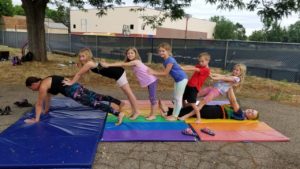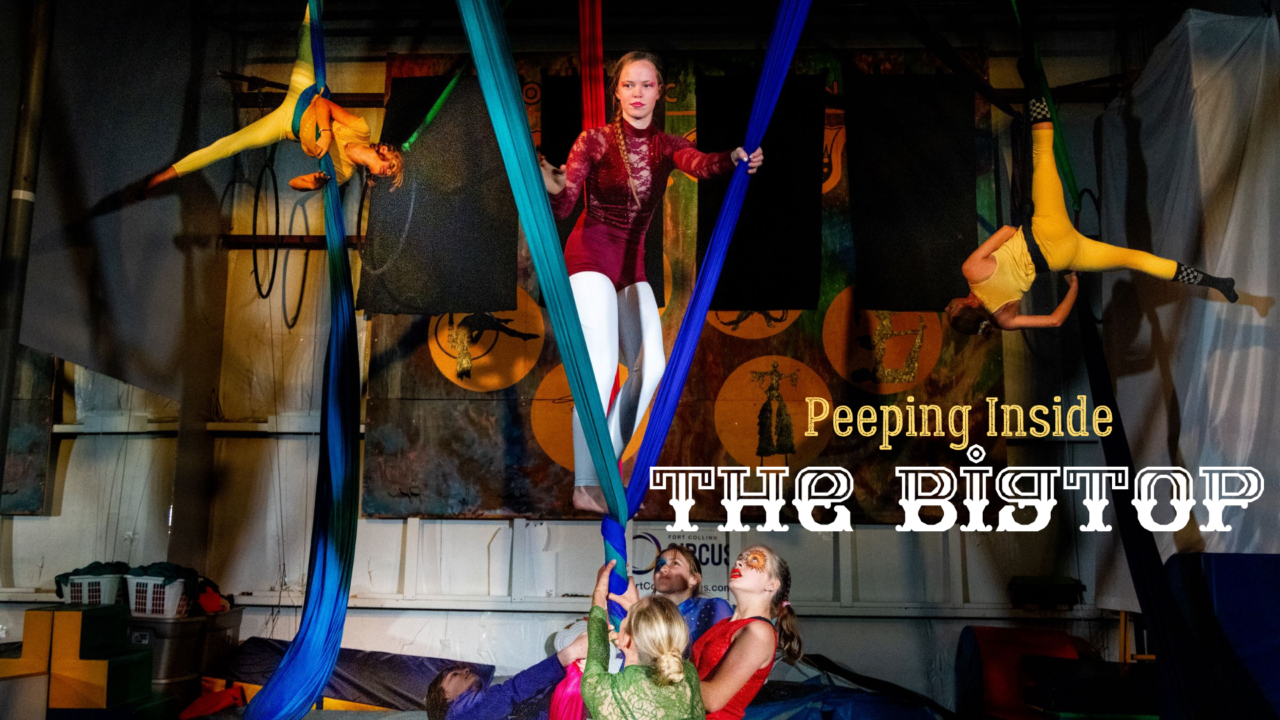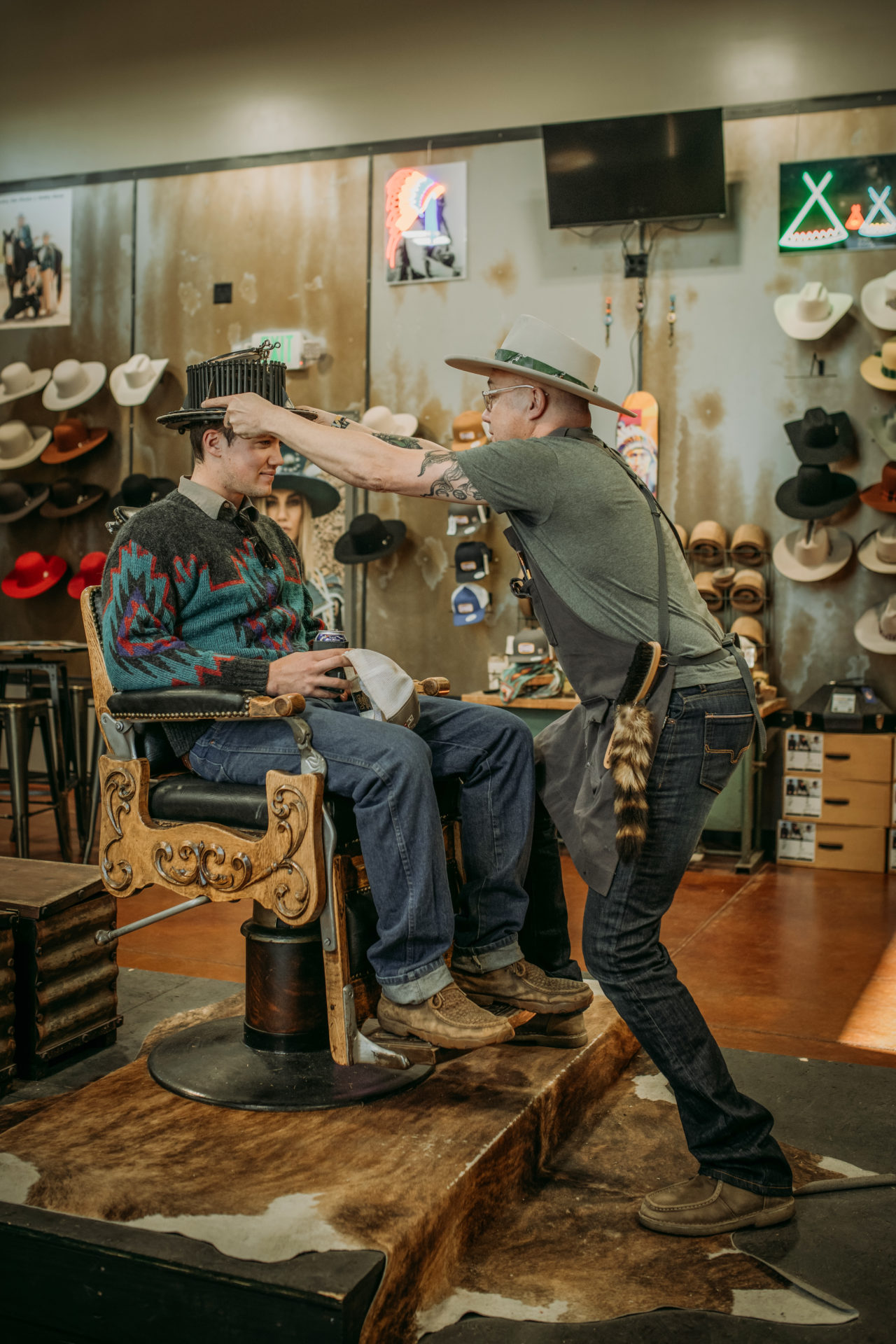By Emily Kemme
Teaching the Art of Circus at Fort Collins Circus Center
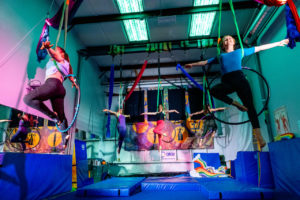 Circuses capture our imagination with glittering pageantry and feats of strength. The jargon itself—“juggling a schedule,” “walking a tightrope” and describing our very human actions as “balancing acts,” weaves the long-practiced art of circus into our cultural cloth.
Circuses capture our imagination with glittering pageantry and feats of strength. The jargon itself—“juggling a schedule,” “walking a tightrope” and describing our very human actions as “balancing acts,” weaves the long-practiced art of circus into our cultural cloth.
Addressing the question of what is a circus, the National Endowment for Teaching the Art of Circus at Fort Collins Circus Center the Arts includes these spectacular feats in a folk and traditional arts category, underscoring how they “speak to family and community, inter-generational transmission of knowledge, and shared language, culture, and history.”
The founders of Fort Collins Circus Center (FC3), Jes L. Schultz and Lindy Zuroski, along with their staff, work to further those ideas, offering classes for a range of skill levels.
Beginning as early as preschool gym, tots ages 2.5 to 5 years can learn to tumble and fly. Children also engage in listening games, navigate obstacle courses, hang on apparatuses and more. Part of learning includes time spent understanding how to cooperate with others.
As skills increase, older students learn dance, yoga, aerial sling, Lyra—the metal hoop from which aerial acrobats execute precise movements while suspended from heights—as well as silks, hula hooping and more.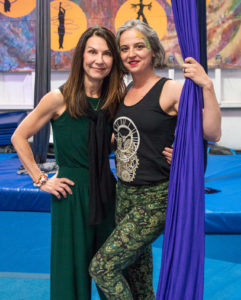
Programs at FC3 differ from dance, gymnastics or yoga—they literally take things up a level, Zuroski says. While other exercise disciplines are embedded in the curriculum, circus arts are notable because they often take place off the floor. Yoga is a big part of learning as well.
Before an artist can fly through the air or roll down from the top of a pole wrapped in fabric, “students need to know where their hips are facing in the air,” she explains.
“Yoga is about alignment and direction of energy: how do you arrange your muscles to make your bones fit in specific alignment?”
Students learn how to position their legs in any direction while keeping their hips facing a certain way.
“When you put artists in the air, you don’t have ground to stand on, so you need to know where your leg is in relation to your hips,” Schultz says. “You’re moving in space, you’re flying in the air. You can’t control your body in the fabrics unless you know how to engage your muscles to control the relationship between your hips and your legs.”
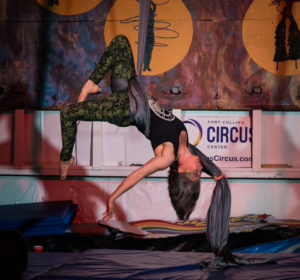 She says it takes at least 10 classes for children to get the concept: An adult will typically get it in one class.
She says it takes at least 10 classes for children to get the concept: An adult will typically get it in one class.
Building physical strength is emphasized, but circus discipline also teaches mental strength.
“Circus arts teach students to take risks in a safe place, and that success doesn’t always come right away,” she says. “It teaches dedication, determination, resilience and helps people learn how to deal with pain that’s both physical and mental—the pain of failure. They learn to be okay with it and try again.”
Zuroski, who is a clinical pharmacist and goes by the name Duchess in the circus community, was intrigued by circus art training and decided to pursue circus arts to enhance her mental health and wellness.
“My vocation of clinical pharmacy is intense work and a lot of responsibility. Circus gave me a new way of becoming strong and to express myself with music and movement, which is not what I do in my normal 40-hour week,” she says.
She took up the discipline in 2012 after picking up a hula hoop; she followed that by learning tricking and dance flow. By 2014, she’d started spinning fire and by 2016 was performing with Schultz.
Zuroski is amazed by her physical ability now, and at 57, says she’s not done learning.
She finds Schultz’s teaching non-intimidating. Schultz, who brings 23 years of experience in gymnastics, dance and yoga disciplines, was introduced to circus arts through aero-yoga, which can include balancing people on top of people.
Along with the physical nature of circus, one FC3 program centers on community outreach. Called Evolution Circus, the troupe of youths ages 11-18 work to bring the joy of circus arts to the community. Together, they choreograph pieces and learn how to make group decisions, including accepting differences of opinion, Schultz says. The troupe also obtains their own gigs and arranges events.
In addition to circus classes, summer camps and children’s workshops, FC3 provides professional circus entertainment for events, showcasing aerialists, stilt walkers, jugglers, hula hoopers and acrobatics. Performers are also available for birthday parties and can bring portable aerial rigs for high acts.
CIRCUS TRICKS TIPS
Schultz offers these basic instructions:
Hula hoop from neck to waist: Spin a hula hoop around your neck. Once you can spin comfortably, when you see the circle of the hoop in front of your body, lift your arms straight into the air in that space. The hoop will move from your neck and down your body, transitioning from neck to your waist.
Juggling: Start with two balls, throwing each ball to the opposite hand and making sure balls reach the same height. Establish this rhythm—throw, throw, catch, catch. Both balls will be in the air at the same time.
